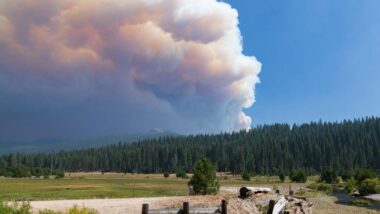Top Class Actions’s website and social media posts use affiliate links. If you make a purchase using such links, we may receive a commission, but it will not result in any additional charges to you. Please review our Affiliate Link Disclosure for more information.
COVID-19 Overview
COVID-19 is short for SARS-CoV-2, a newly discovered highly contagious virus that has caused a worldwide pandemic that has been traced back to December 2019 in Wuhan, China. A cluster of cases of pneumonia in that geographical area eventually was identified as COVID-19, a novel (new) coronavirus, which means it has not previously been seen in humans.
The World Health Organization (WHO) set up an Incident Management Support Team (IMST) to help deal with the outbreak and by the third week of January 2020, determined there was evidence of human-to-human transmission of the new virus. On March 11, 2020, WHO declared that COVID-19 was a global pandemic.
As of June 27, 2020, WHO has confirmed more than 9.6 million cases around the world and more than 491,000 deaths.
The U.S. Centers for Disease Control and Prevention (CDC) reported 2,459,472 cases and 124,976 deaths in the United States as of June 27, 2020.
What Is a Coronavirus?
Coronavirus is a group of viruses that usually cause humans and animals to experience mild or moderate respiratory illness.
COVID-19 has been an unusual coronavirus due to many reasons, including the fact that some people become deathly ill while one out of five who test positive for the virus exhibit no symptoms.
Symptoms of COVID-19
The CDC says symptoms may appear for two to 14 days after initial exposure to COVID-19. The following includes the most common symptoms of the disease:
- Fever or chills
- Shortness of breath/difficulty breathing
- Cough
- Fatigue
- Muscle or body aches
- Headache
- New loss of taste or smell
- Sore throat
- Congestion or runny nose
- Nausea or vomiting
- Diarrhea
The CDC recommends someone who is showing certain symptoms to seek emergency medical care without delay. These troubling signs include struggling to breathe, constant pain or pressure in the chest, the onset of confusion, inability to wake or stay awake, a bluish tinge to lips or face, which indicates a serious lack of oxygen.
How Does COVID-19 Spread?
COVID-19 spreads from human to human through respiratory droplets. When an infected person coughs, sneezes or even speaks, tiny droplets of respiratory secretions carry the virus through the air.
Because the droplets don’t usually travel more than a few feet without falling to the ground or a nearby surface, public health experts have recommended social distancing of six feet. This means if people stay six feet away from others, they should be safe from the dangers of inhaling someone else’s airborne respiratory secretions.
In some cases, researchers have determined COVID-19 has spread when an infected person’s respiratory secretions have entered the body of another person through the eyes. This is why many health care facilities have their employees wear full, clear, disposable face shields in addition to masks.
COVID-19 also can survive on various surfaces for several hours or days. If you touch a contaminated surface and then touch your face, you could become infected.
According to Hopkins Medicine, the new coronavirus can no longer be detected on plastic surfaces after 72 hours. The virus can survive on stainless steel and cardboard for up to 48 hours.
Who Is Most at Risk?
COVID-19 is a newly diagnosed disease, but researchers already have determined who among us might be at the most risk of severe disease or complications.
Among those who the CDC says is at an increased risk of severe illness if they contract COVID-19 are those at any age with the following:
- Chronic kidney disease
- COPD (chronic obstructive pulmonary disease)
- Weakened immune system, such as from undergoing organ transplantation
- Obesity (Body Mass Index of 30 or greater)
- Serious heart problems (heart failure, coronary artery disease or cardiomyopathies)
- Sickle cell disease
- Type 2 diabetes
In addition, people with the following conditions might be at an increased risk for severe illness from COVID-19, according to the CDC:
- Asthma (moderate to severe)
- Cerebrovascular disease (an ailment that affects blood vessels and blood supply to the brain)
- Cystic fibrosis
- High blood pressure
- Weakened immune system from blood or bone marrow transplant, immune system deficiencies, HIV, use of corticosteroids or other types of immune-weakening medications
- Neurologic issues, including dementia
- Liver disease
- Pregnancy
- Pulmonary fibrosis (damaged or scarred lung tissues)
- Smoking
- Thalassemia (a blood disorder)
- Type 1 diabetes
Coronavirus Complications
COVID-19 is known to cause a severe inflammatory response in some patients and a tendency to experience blood clots, according to infections disease doctor Rochelle Walensky of Massachusetts General Hospital. Symptoms may range from a severely reduced blood flow to the intestines to purple-tinged, inflamed toes, now known as “Covid toe.”
According to STAT News, researchers have determined that COVID-19 enters the body through two receptors, one of which is the ACE2 receptor, which was also the gateway used by the original SARS virus.
The body has ACE2 receptors in the cells that line the insides of blood vessels. Called vascular endothelial cells, these types of cells are in the kidneys and the gastrointestinal tract.
Researchers who looked at hospital records of 1,000 coronavirus patients in a New York City hospital found that 78 percent of patients in the intensive care unit had acute kidney injury.
ACE2 is also expressed by the olfactory cells of the nose, which is why some patients report a loss of ability to smell.
The lungs also contain ACE 2 receptors. Walensky told STAT that once the lung’s cells become infected with COVID-19, they either don’t work or die and then are attacked by immune system cells that produce the severe inflammatory response known as acute respiratory distress syndrome (ARDS) that causes patients to suffer severe breathing difficulties.
Coronavirus Lawsuits
COVID-19 has caused a litany of damage in the few short months the disease became known. Class action lawsuits have been filed by surviving family members of nursing home patients who allege neglect where their loved one contracted the disease and died.
Students who paid tens of thousands of dollars for tuition and room and board at major universities have filed lawsuits over allegations the universities became unjustly enriched after sending students away from campus to complete their final months of study online from home.
Businesses forced to shut down due to the pandemic also have filed lawsuits when they’ve been denied business interruption insurance coverage by their insurance companies.
In other cases, employees have filed class action lawsuits against employers, who they claim did not do enough to protect employees from contracting the coronavirus from fellow co-workers or from customers, depending upon the work site’s circumstances.















